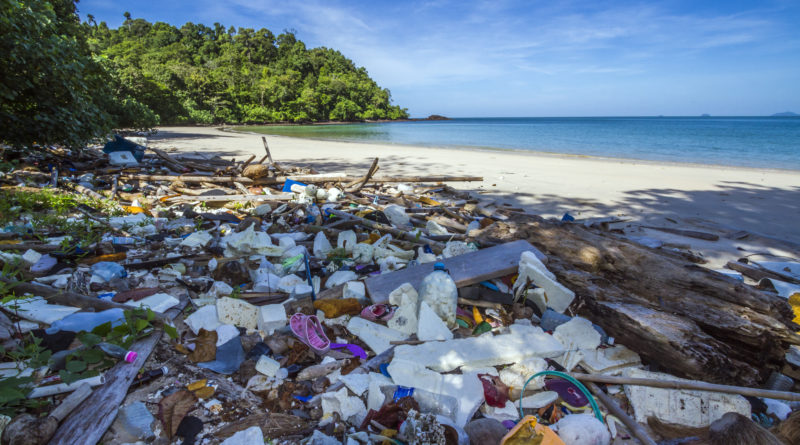These Remote Islands Are Overflowing With Plastic
16,707 total views, 2 views today
In 2019, it can seem as though bad news about plastics is everywhere all the time. Following news just last month that microplastic articles are drifting into remote areas, researchers have discovered the newest location where plastic waste is piling up in massive quantities.
Research published May 16th in the journal Scientific Reports details the growing catastrophe of the Cocos (Keeling) Islands, two small Australian islands located about 2,500 miles northwest of the country’s center. Although the islands are heralded for their gorgeous beaches, their shores are currently overflowing with plastic waste. The scientists behind the May 16th report have estimated that as many as 414 million pieces of plastic have washed up on the islands’ shores from faraway regions.
The scientists did not, of course, hand-count 414 million individual pieces of plastic. Instead, study leader Jennifer Lavers, who researchers plastics at Australia’s University of Tasmania, joined activist organization Sea Shepherd on a trip to the islands and took samples of shoreline plastics. She, her fellow scientists, and Sea Shepherd’s activists cordoned off 15 sections of the beach, from the water to where greenery begins to grow. In each section, they dug four inches deep into the sand and hand-counted the number of plastic pieces found. In this work, Lavers and her colleagues found 23,227 plastic pieces. Extrapolated to the total surface area of Cocos (Keeling) Islands shoreline, the researchers determined the alarming 414 million pieces estimate, which Lavers says includes 373,000 toothbrushes and nearly one million shoes, primarily flip-flops.
Especially concerning in the May 16th report is the ratio of plastics found to the size of the Cocos (Keeling) Islands. The islands comprise not even six square miles, and this tiny size is part of why the study centered on them. The islands’ population is inherently tiny due to their limited size, meaning that any plastic found on them would point to plastic consumption around the world as the pollution source.
The researchers also discovered that a larger number of plastics is found as one digs deeper and deeper into the sand. Plastic makes its way so deep into shoreline sand because strong sunlight accelerates its decomposition, and as ocean waves crash against plastics, they break the plastics into smaller pieces that make their way deep into the sand. These tiny plastic pieces are a particularly huge problem, as they’re exactly small enough for birds, fish, and turtles to eat.
The Scientific Reports study has implications that reach far beyond the Coocs (Keeling) Islands. Its results suggest that the tiny plastic pieces found deep in the islands’ sand can be found anywhere on the planet, including other remote islands and in locations as extreme as the Arctic. The report also indicates that the problem is only getting worse, as half of all plastics that humanity has ever produced were manufactured in just the past 13 years. There may be hope, though, with developments such as infinitely recyclable plastics set to become publicly available sooner than later.

